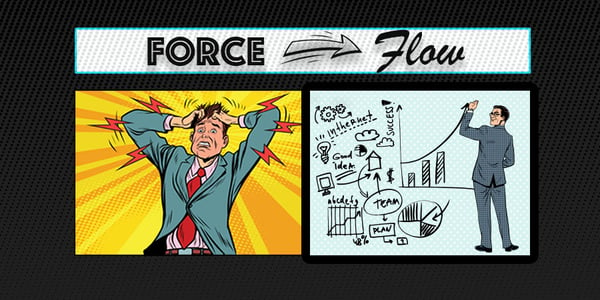The terms 'end-to-end' and 'integration testing' have some in the software testing world conflicted. Let’s start by clarifying that end-to-end and integration testing are not the same. The purpose and function are quite different. Granted, when both types of tests are executed, there may be some overlap. However, one does not supplant the other.
End-to-end (often referred to as “system”) testing focuses on customer workflows and user scenarios to improve customer satisfaction and experience. Testing verifies a specific workflow behaves as expected from start to finish through the application. Essentially, you’re testing to verify customers can use the application through a specific use case.
Integration testing is an internal test of all system components to ensure they work as expected when connected. This includes both internal and external components, for example APIs, databases, backend messaging engines, triggers, microservices, and third party software. Testing verifies these components work together properly as the end user operates the application.
Let’s review both testing types, key differences, and tips for when to use one or the other, or both, to maximize application quality and customer experience.
What is end-to-end testing?
End-to-end testing verifies that software functions properly from the beginning of a user flow to the end. Testing ensures the user flow, or workflow, meets customer requirements and that it’s both accessible and usable. For best results, end-to-end testing requires a production equivalent environment that includes data and integrated components to simulate real-world user scenarios. When the test environment is not a precise replica of production it can impact testing results, and allow defects to slip into the live environment.
A typical end-to-end workflow in an e-commerce application would be the user navigating to a product page, adding the product, navigating to the shopping cart, checking out, making a payment, and receiving the success result notification. In end-to-end testing, the tester is following the happy path (ie. executing positive tests only), since the purpose is completing the scenario and not performing exploratory or full component testing.
Note that manual end-to-end testing can have significant resource and time costs depending on the depth and thoroughness you intend to cover. If using test automation, this is an excellent opportunity to reduce cost and time for testing by creating a suite of critical E2E priority tests to execute frequently throughout the cycle as a supplement to manual testing.
Alternatively, consider hiring an experienced testing service to conduct end-to-end testing. Expert, independent testers can often identify customer-facing defects that an internal team may miss to an unbiased perspective. Essentially, the external testing team acts as a proxy for the end user. Additionally, you’ll reduce the workload on your internal QA team, freeing them to expand test coverage quality while also getting releases fully tested and delivered on time.
What is integration testing?
A typical software project consists of multiple software units and components, typically coded by several developers. Integration testing combines those software units and components in a logical and strategic fashion, testing them in pairs of integrations and as a group.
Essentially, integration testing verifies whether or not the individual modules or services that make up your application work together as expected. The purpose of this level of testing is to expose defects in the interaction between different modules when they are integrated into the codebase.
Another way of thinking about it, is that integration testing proves that all code dependencies function properly when completely connected and operational.
A common example of integration testing in our previous e-commerce example would be the checkout feature combined with the third party payment gateway. A good integration test plan would detail a thorough validation of these two components with both positive and negative test cases.
Key differences
Integration and end-to-end testing sit further up the agile testing pyramid than unit or component testing. When testing your products, you'll have to decide which tests you want to run or if you can run them all.
A decision may depend on budget, resource constraints, timing, and what parts of the app are being updated in the next production release. The answer will change on a case-by-case or release by release basis. In the table below, we’ve grouped each test type side by side for a quick comparison.
Integration testing |
End-to-end testing |
|
|
|
|
|
|
|
|
|
|
Which test do you need?
The simple answer is that both are needed, at different times. The answer also depends on the application function and customer use. Consider executing integration tests as a function of development, and having testers run end-to-end testing that also incorporates integration testing.
Google's testing blog suggests a 70/20/10 split between unit, integration and end-to-end tests as a general rule of thumb. If a project has a large number of integrations, it should have more integration tests. If an application has complex user interfaces, it will need need more end-to-end testing. The right mix will depend on the nature of the application and the customer base.
If you're still struggling to decide whether you need end-to-end or integration testing, let us help. Check out our testing blog for more information or get in touch to discuss how OnPath Testing services can help you maximize testing quality and customer satisfaction without exceeding your budget or delivery date.



